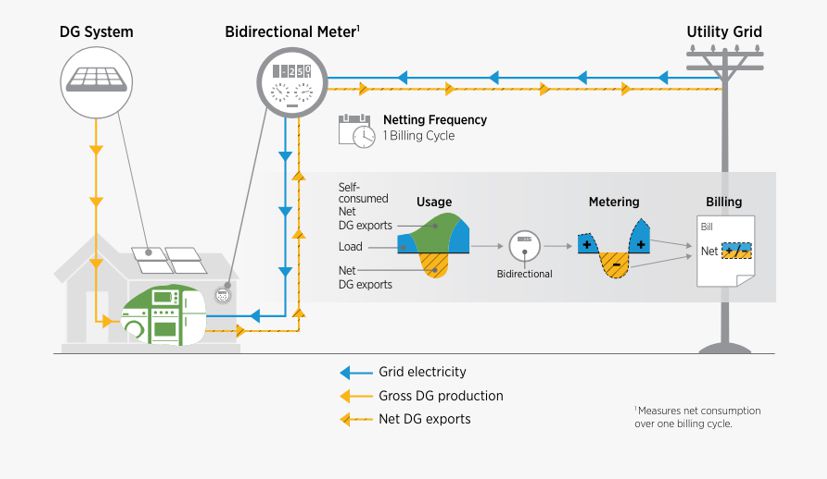Net Metering
There are many different ways in which a household or a business can save money on their electricity bill or receive payments through its interaction with the grid.
Under net metering, a prosumer sell excess solar electricity to their local utility company at a profit and are credited for the amount of solar electricity they add to the grid – these credits are applied to their monthly electric utility bill, lowering their future energy costs and business’s operating expenses.
Net Billing
Net billing instead, is a monetary exchange. If a household or business does not consume the energy it produces in real time, it will sell it to the utility at a price based on the actual market value (often at wholesale price or at a fixed tariff normally below the retail rate ).
Instead of offsetting the credits (KWh’s) gained from your solar panels’ excess energy as it happens in net metering, net billing systems allow you to sell that energy to the utility.
The compensation rate will be lower with net billing than with net metering since net billing customers receive an avoided cost price per kilowatt-hour from their utility versus a credit at retail cost per kilowatt hour.
Net Energy Metering

-
Solar system owners can self-consume electricity generated by their system.
-
Excess electricity is exported to the grid and the customer receives kilowatt hour (kWh) credits valued at the retail rate.
-
kWh credits can be applied within the billing cycle or in future billing cycles.
-
Customer is billed for net energy consumption.
Net Billing

-
Solar system owners can self-consume electricity generated by their system.
-
Excess electricity is exported to the grid and the customer receives a predetermined sell rate credit valued below retail rate (wholesale rate).
-
Customers cannot bank kWh to use as credit for future billing cycles.
(Source : NREL)